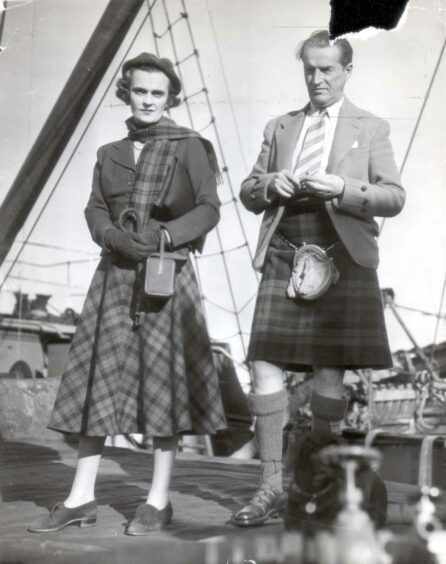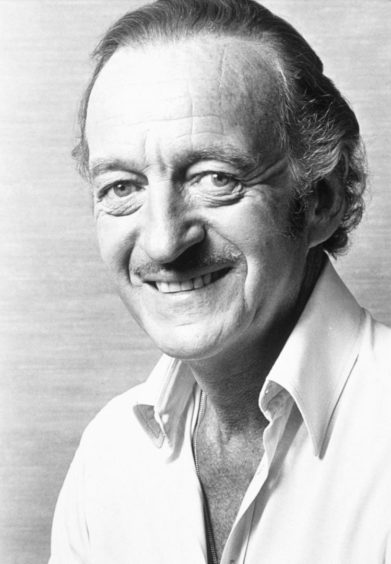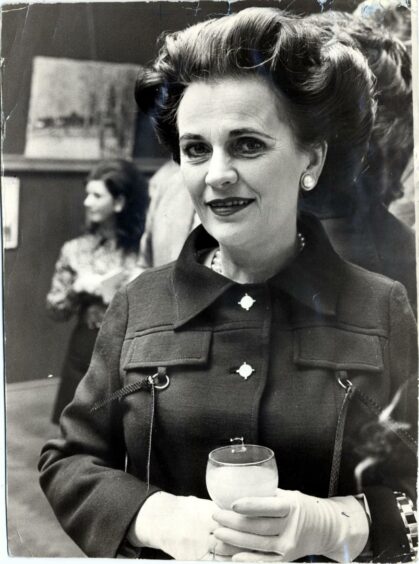She loved sex the way that Billy Bunter loved food and never made any apologies for her mantra: “Go to bed early and often”.
But was Margaret Campbell, the Duchess of Argyll, really “a completely promiscuous woman whose sexual appetite could only be satisfied with a number of men”, as she was described by Lord John Wheatley, the presiding judge in one of the most notorious court cases of the 1960s?
He duly granted the Duke of Argyll a divorce, following a litany of lurid revelations which included a set of Polaroid photographs of the Duchess naked, save for her signature three-strand pearl necklace, in the company of another man. Was it actor Douglas Fairbanks? Or politician Duncan-Sandys, the son-in-law of Winston Churchill, who offered to resign from the Conservative cabinet?
Or was it a member of the Royal Family?
Many of these issues will be examined in a new TV series, A Very British Scandal, written by Sarah Phelps, who has swapped her updating of Agatha Christie classics to tell a story which would have made Miss Marple blush.
But while the Scottish-born Duchess, who died in 1993 at the age of 80, had her reputation trashed in the tabloids and in the courts by people such as Wheatley, who traduced her “disgusting sexual activities” and “wholly immoral lifestyle” as if he was wiping something nasty off his shoe, she always came back with the same reply: “It takes two to tango.”
Double standards abounded in her life
Controversy was never far away from Margaret, the only child of Helen Mann Hannay and George Hay Whigham, a Scottish millionaire who was chairman of the Celanese Corporation of Britain and North America.
Even as a teenager, her beauty was much spoken of, and she had youthful romances with playboy Prince Aly Khan, millionaire aviator Glen Kidston and publishing heir Max Aitken, later the second Lord Beaverbrook.
In 1928, the actor David Niven, who was then 18, had sex with the 15-year-old Margaret Whigham, during a holiday at Bembridge on the Isle of Wight.
To the fury of her father, she became pregnant as a result.
She was rushed into a London nursing home for a secret termination and “all hell broke loose,” according to her family cook, Elizabeth Duckworth.
But while she was portrayed as the villain of the piece even by her own kith and kin, nowadays it would be Niven standing in the dock.
In 1933, Margaret married American businessman Charles Francis Sweeny in London and such was the publicity surrounding her Norman Hartnell wedding dress, that the traffic in Knightsbridge was blocked for three hours.
The couple had three children: a daughter, who was stillborn at eight months; another daughter, Frances Helen, and a son, Brian Charles, but she also suffered eight miscarriages. And she gradually grew bored of domesticity.
Whenever life became “tedious”, she craved adventure. But even Margaret was unprepared for what happened in 1943 when she suffered a near-fatal fall down a lift shaft while visiting her chiropodist on Bond Street.
It could have been the end of her
“I fell forty feet to the bottom of the lift shaft”, she later recalled. “The only thing that saved me was the lift cable, which broke my fall.
“I must have clutched at it for dear life, for it was later found that all my finger nails had been torn off. I apparently fell on to my knees and cracked the back of my head against the wall”.
It’s sometimes said that pride comes before a fall. Not in Margaret’s case after she and Sweeny divorced in 1947.
It wasn’t long before she was back on her feet and swaying men off theirs. She dismissed critics with the argument: A man who makes love to many women is called a Casanova. A woman who makes love to many men is called a slut.
And, in 1951, Margaret became the third wife of Ian Douglas Campbell, 11th Duke of Argyll and (briefly) settled into married life in Inveraray.
She was certainly uninterested in the idea of modesty and later wrote in her memoirs: “I had wealth and I had good looks. As a young woman, I had been constantly photographed, flirted with, written about and mentioned by Cole Porter in the words of his hit song You’re the Top.
“The top was what I was supposed to be. I had become a duchess and the mistress of a historic castle. Life was apparently roses all the way.”
According to Lyndsy Spence, a biographer of the Duchess, the Duke of Argyll forged a deed of sale before their marriage in exchange for her money which he used to restore his family home at Inveraray.
The Duchess, in response, forged several letters positing the theory that sons from her husband’s second marriage were not legitimate and attempted to acquire a baby whom she could claim to be her husband’s heir.
This was not what most people would describe as a love match.
The court case was scandalous
Within a few years, the marriage was falling apart. The Duke suspected his wife of infidelity and, while she was in New York, engaged a locksmith to break open a cupboard at their Mayfair home.
His discoveries resulted in the infamous divorce case, in which he accused his wife of serial infidelity and produced the Polaroid shots and other photographs of the Duchess performing a sex act on a naked man whose face was not shown.
A list of as many as 88 men with whom the Duke believed his wife had consorted was produced in court and it featured two government ministers and three members of the British royal family. This was explosive stuff even at the start of what soon became the Swinging Sixties and Lord Wheatley passed down his withering verdict on the Duchess.
Although she never admitted to being an angel, Margaret never asked anybody to jump into bed with her either. Not that they needed an invitation.
She told The New York Times in the 1980s: “I don’t think anybody has real style or class any more. Everyone’s gotten old and fat.”
But she described herself as “always vain, always spoilt”. And another quote from that exclusive interview offered an insight into her eccentric needs in old age: “Always a poodle, only a poodle! That and three strands of pearls. They are absolutely the essential things in life.”
Claire Foy from The Crown will play the oft-derided “dirty duchess” in the new drama and it’s obvious Sarah Phelps is aiming to create more than just a one-dimensional version of her main character.
She said: “[Margaret was] a little girl who’d been brought up highly isolated, to live entirely within the male gaze of her father’s approval”
“She had to give birth to a stillborn child. On its own, that is absolutely heartbreaking. And after that, she had miscarriage after miscarriage after miscarriage – having her own two children nearly damn killed her.
“It’s to the point where it doesn’t matter how much money you’ve got. It doesn’t matter whether or not that mink stole you threw so casually round your shoulders was the most photographed mink stole that day.”
It promises to be one of the highlights of the festive season.
But probably not for those of a sensitive disposition.
The first part of A Very British Scandal is on BBC One at 9pm on Boxing Day.
More like this:
When Elizabeth became Ewan and a court case sparked a media frenzy in Aberdeenshire




